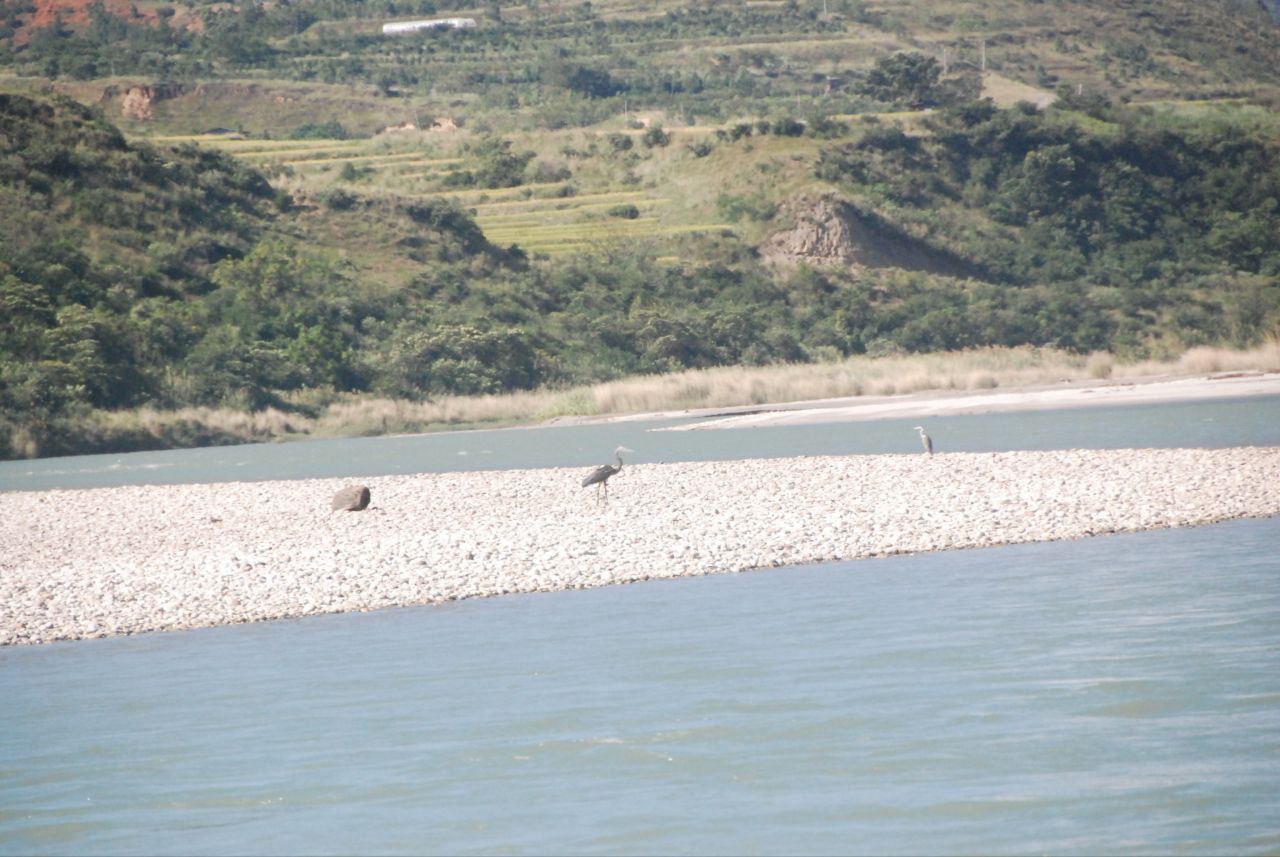With one White-bellied Heron (Ardea insignis) having recently returned to Punatsangchhu, after several years gap, another one has joined, making it a pair now. A pair has been recently sighted in Punakha and Wangdue Phodrang area. The area is believed to be returning to its former glory of a WBH hotspot.
There was a time when many birders flocked Punatsangchhu area, not just for several water bird species but mainly because it provided easy sighting of a rare and endangered White-bellied heron. However, in the last three years, the area went dry with WBH having disappeared altogether.
“It has become not a usual thing or common to sight White-bellied Heron in the area and also not a usual to sight two herons together at this time”, states RSPN social media post. Two WBH has been sighted feeding alongside by a edge of boulder island in middle of Punatsangchhu.
However, in order not to make the history repeat, it is cautioned to not face them too close. The bird is elusive in nature and sensitive to presence of human and predator animals. In addition, it is also recommended to know rivers attitude and also limit visits. Children can be bothersome. Hence, they must be controlled from loitering near the river. Children get easily excited by the birds and land up testing their aim.
It is also discouraged to buy fish from illegal fish market. “The more you buy the fish from illegal fisherman, more you are investing to drive away the heron. Herons consume only fish. No fish is No heron.”
It is also in the same area that rafting is done While rafting may continue. it is advised to choose the timing. Rafting is encouraged during the bright sunny day and in the afternoon hour. “Early morning and late evening must be left for the WBH since it usually around this time that they feed.
Important of all, everyone is asked to be a messenger of heron. It is best done by advocating people that the heron is rarest bird and critically endangered. “We are lucky to have them from less than 60 individuals remaining in the world.”
Photographer: Sonam Penjor.
![]()


